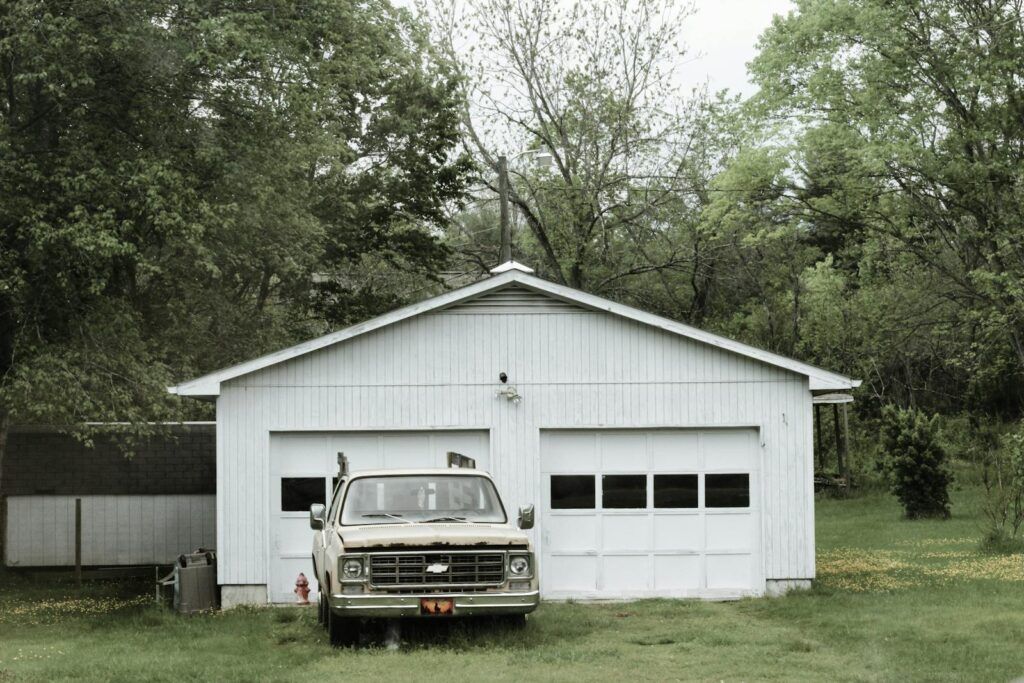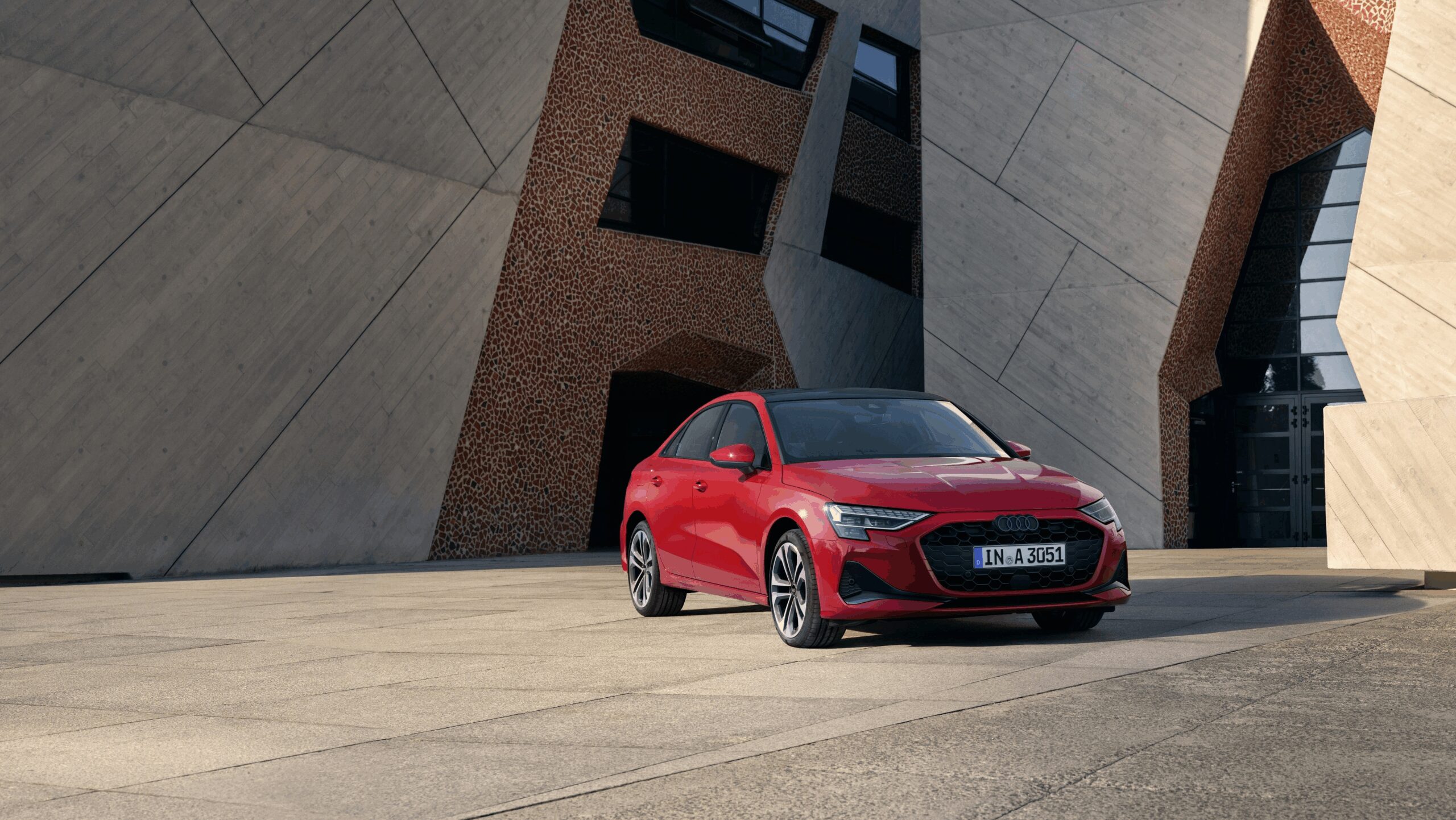Alright, gearheads, settle in. We’re about to embark on a no-holds-barred journey through the automotive hall of shame, a place where good intentions often pave the road to utter mechanical mayhem. Because let’s be honest, for every sleek, powerful, perfectly engineered machine that rolls off the assembly line, there are at least a few that make us scratch our heads and wonder, ‘What were they *thinking*?’ These aren’t just cars that had a bad day; these are the vehicles that, for a multitude of reasons, probably shouldn’t have been made in the first place. They are the automotive equivalent of a really bad idea that someone, somewhere, decided to greenlight.
Defining a ‘bad car’ is, of course, a subjective art. There are no objective quantifiable standards when it comes to outright automotive catastrophe. However, the cars on our list have been consistently judged by a symphony of negative reception. We’re talking poor critical reception from journalists, abysmal customer satisfaction, a litany of safety defects, and sometimes, just plain shoddy workmanship. Different sources use a variety of criteria, from ‘worst cars for the environment’ to ‘lowest projected reliability’ and even ‘lemon lists’ of notoriously unreliable vehicles with nonexistent service support. It’s a broad church of automotive woe, and we’re here to offer a critical analysis with a distinctly insider perspective.
Some of these machines were immediate duds, despised from the moment they hit the showroom floor. Others, surprisingly, were popular or even critically praised at launch, only to earn a negative retroactive reception as their flaws became glaringly apparent. And then there are those that weren’t intrinsically ‘bad’ but acquired infamy for safety or emissions defects that irrevocably damaged their reputations. Conversely, a few poorly received vehicles eventually became cult classics, reevaluated by collectors with a certain morbid fascination. But for the purpose of this definitive takedown, we’re focusing on the true misfires, the genuine vehicular blunders that left an indelible, often negative, mark on automotive history. Let’s peel back the layers of design disaster and engineering folly, starting with some head-scratchers from the post-war era.
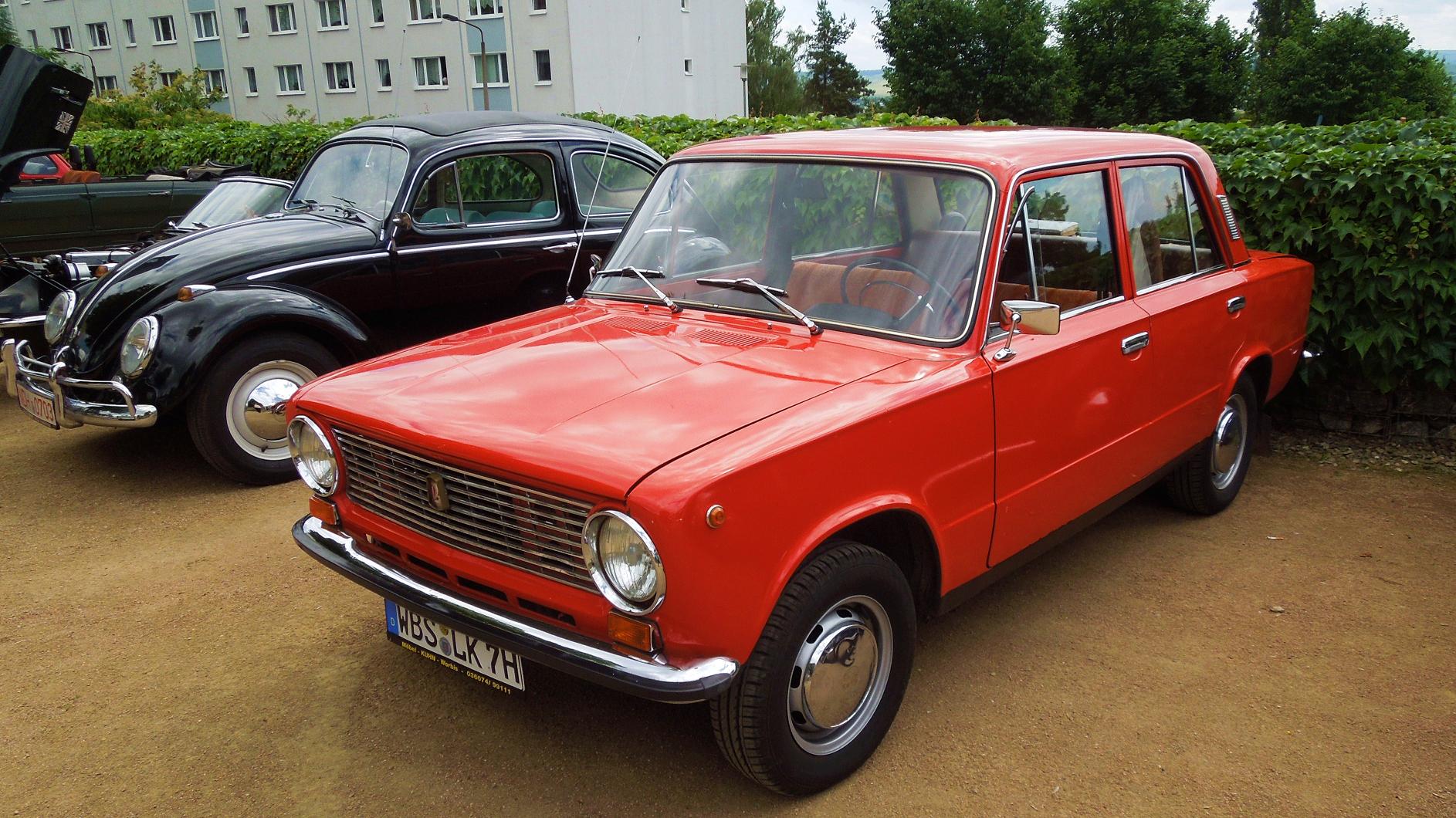
1. Triumph Mayflower (1949–53)
The Triumph Mayflower was born from a curious ambition: an attempt by Triumph to manufacture a luxury small car that, quite literally, aimed to appeal mainly to the US market. It was an intriguing concept on paper, designed to capture a segment that perhaps didn’t fully exist for a vehicle of its particular ilk. Mechanically, it borrowed components from the Standard Vanguard and featured a motor based on that of the Standard Ten, a common practice of the era to streamline production and reduce costs.
However, where the Mayflower truly veered off course was in its aesthetics. The body was largely inspired by the elegant Rolls-Royce and Bentley luxury limousines of the era, most notably the Rolls-Royce Silver Dawn. But here’s the kicker: it was *much smaller*. This dramatic scaling down of a grand design meant that the “design and proportions look rather odd,” to put it mildly. Imagine a perfectly tailored suit shrunk two sizes; the quality might still be there, but the fit is all wrong, resulting in a somewhat comical appearance that simply didn’t translate well.
This visual peculiarity was compounded by practical deficiencies. The body, despite its diminutive stature, was rather heavy. This mass, combined with the small motor, rendered the car severely underpowered and slow. It could only reach a top speed of 63 mph (101 km/h), a performance figure that hardly screamed ‘luxury’ or ‘appealing to the US market’ where larger, more powerful cars were the norm and quickly becoming the aspiration. It was a luxury car that forgot to be luxurious in its drive.
Unsurprisingly, the Mayflower became a punching bag for critics. James May famously called it “the ugliest car ever built,” quipping, “Its details are ugly, its overall proportions are ugly, its very concept – as a car to appeal to Americans who believed they were directly descended from the Pilgrim Fathers – makes one shudder.” Stuff.co.nz echoed this sentiment, including it in an article on ‘Cars that should never have been built,’ stating, “It always looked like the misshapen out of scale miniature of the larger, more elegant Renown model, viewed in the distorted reflection of a fairground mirror.” It wasn’t just an ugly duckling; it was a deeply flawed concept that simply did not land.
Read more about: Are You Driving a ‘Jerk’ Car? 14 Vehicles With Bad Driver Reputations
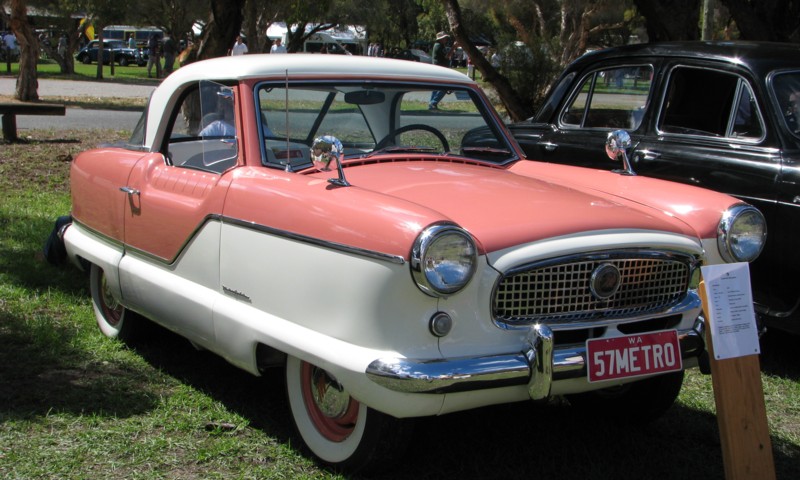
2. Nash/Austin Metropolitan (1954–62)
The Nash Metropolitan represented another early attempt by a US car maker to break into the small car market, conceived mainly as a ‘second car.’ Its main developer, George Mason, envisioned it as ‘a big car in miniature,’ aiming for a more luxurious feel than other small cars of the era. It was also pioneering in its marketing strategy, as ‘one of the first cars specifically designed for and marketed towards women,’ pitched as ‘a motorized shopping cart for affluent urban gals.’
This bold venture was a transatlantic affair, developed by Nash in co-operation with British Austin Motors, who also produced it at their Longbridge plant. This made it the first US-developed car to be entirely produced in a different country, a logistical marvel for its time. However, despite significant marketing efforts and a novel approach to its target demographic, the Metropolitan never achieved the sales figures Nash had projected. It was destined to be a commercial failure, a stark reminder that even innovative marketing can’t save a fundamentally flawed product.
The primary reasons for its downfall were a cocktail of poor attributes: “poor performance, poor handling, poor reliability.” Furthermore, the US market for small economy cars proved to be smaller than anticipated. Ironically, while Nash believed it was “exactly the car America needed,” the rising prosperity of the 1950s was actually driving consumers towards bigger, full-size cars, completely contradicting the Metropolitan’s intended niche. It was a case of being ahead of its time, or perhaps, simply out of sync with it.
Its struggles weren’t confined to American shores; Austin sold it under its own brand in Europe, but with only about 9,300 units sold, it failed to gain traction there either. Brian Sewell of The Independent bluntly called it “one of the nastiest cars ever built.” Stuff.co.nz included it in their list of ‘Cars that should never have been built,’ noting, “Designed to conquer the US market by combining Nash styling with British small car mechanicals and innovation, the Metropolitan was an abject failure being the worst of both worlds.” Money Inc. went further, labeling it “One of the biggest bombs in automotive history and definitely one of the worst cars ever made.” Despite its ignominious reputation, this quirky little car has managed to amass a small but enthusiastic cult following, with collector prices for well-preserved examples now reaching almost three times their original price, proving that even failures can find their fans.
Car Model Information: 1956 Nash Metropolitan
Caption: 1957 Metropolitan
Name: Metropolitan
Manufacturer: Austin Motor Company
Aka: Hudson Motor Car Company,American Motors,Austin Metropolitan
Production: October 1953–April 1961
ModelYears: 1954–1962
Assembly: Longbridge plant,Birmingham,West Midlands (county)
Class: Economy car,Subcompact car
BodyStyle: hardtop,convertible
Layout: FR layout
Engine: {{convert,1200,cc,L,lk=on,abbr=on,BMC B-Series engine,Inline-four engine
Abbr: on (base)
Transmission: Manual transmission
Wheelbase: 85 in
Length: 149.5 in
Width: 61.5 in
Height: 54.5 in
Weight: convert
Designer: William J. Flajole
Categories: 1960s cars, All articles with unsourced statements, Articles with short description, Articles with unsourced statements from July 2008, CS1 German-language sources (de)
Summary: The Nash Metropolitan is an American automobile assembled in England and marketed from 1953 until 1962.
It conforms to two classes of vehicle: economy car and subcompact car. The Metropolitan is considered a “subcompact”, but this category was not yet in use when the car was made. At that time, it was categorized as a “small automobile” as well as an “economy car”.
The Metropolitan was also marketed as a Hudson model when Nash and Hudson merged in 1954 to form the American Motors Corporation (AMC). The Nash and Hudson lines were phased out in favor of the Rambler line, and in 1957, the Metropolitan became a standalone brand and was badged with a stylized ‘M’ on hubcaps and grille. The cars were also sold in the United Kingdom and other markets.
Get more information about: Nash Metropolitan
Buying a high-performing used car >>>
Brand: Nash Model: Metropolitan
Price: $20,000 Mileage: 24,262 mi.
Read more about: Are You Driving a ‘Jerk’ Car? 14 Vehicles With Bad Driver Reputations
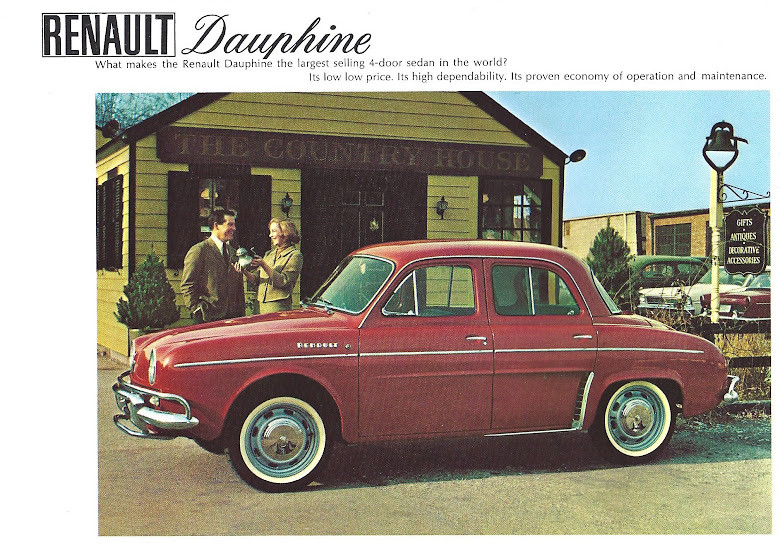
3. Renault Dauphine (North American version) (1956–67)
The Renault Dauphine presents a fascinating dichotomy in automotive history. In Europe, it was a major sales success, widely regarded as one of the forerunners of the modern economy car. Its compact size, efficiency, and affordable price resonated with European consumers in the post-war era, cementing its place in the continent’s automotive landscape. However, when it crossed the Atlantic, the Dauphine encountered a vastly different reception, largely for its “poor performance and poor reliability” in the context of American roads and driving habits.
American automotive journalists were particularly brutal in their assessments of its capabilities. A period review by Road & Track magazine found that the Dauphine took a glacial 32 seconds to accelerate to 60 mph (97 km/h) from a standstill. This kind of performance put it at a severe disadvantage on American highways, which were increasingly populated by more powerful domestic vehicles. Dan Neil, a prominent automotive writer, didn’t pull any punches, calling it “The most ineffective bit of French engineering since the Maginot Line,” and noting that its performance “put the Dauphine at a severe disadvantage in any drag race involving farm equipment.”
Beyond its lackluster performance, another critical problem that severely damaged the Dauphine’s reputation in the U.S. was its abysmal corrosion record. A 2008 retrospective article in The Independent highlighted this flaw: “as soon as the US market had come to grips with the Dauphine’s swing-axle manners and useless acceleration, they were pole-axed by its abysmal corrosion record.” The article vividly described how “It would take only one New York winter of driving on salt-strewn roads to give a Dauphine front wings that resembled net curtains.” This vulnerability to rust was a fatal flaw in a market where cars were expected to withstand harsher conditions than their European counterparts.
The cumulative impact of these issues forced Renault into an embarrassing position, leading them to issue apologies for the Dauphine’s flaws in American print advertisements. They marketed its successor, the Renault 8, with a famously self-aware slogan: “The Renault for people who swore they wouldn’t buy another one.” The Dauphine’s legacy in the U.S. is one of failure, earning it a spot on Autoblog’s “The 20 Dumbest Cars of All Time” and Time’s “50 Worst Cars of All Time” lists, solidifying its status as an automotive cautionary tale.
Read more about: Are You Driving a ‘Jerk’ Car? 14 Vehicles With Bad Driver Reputations
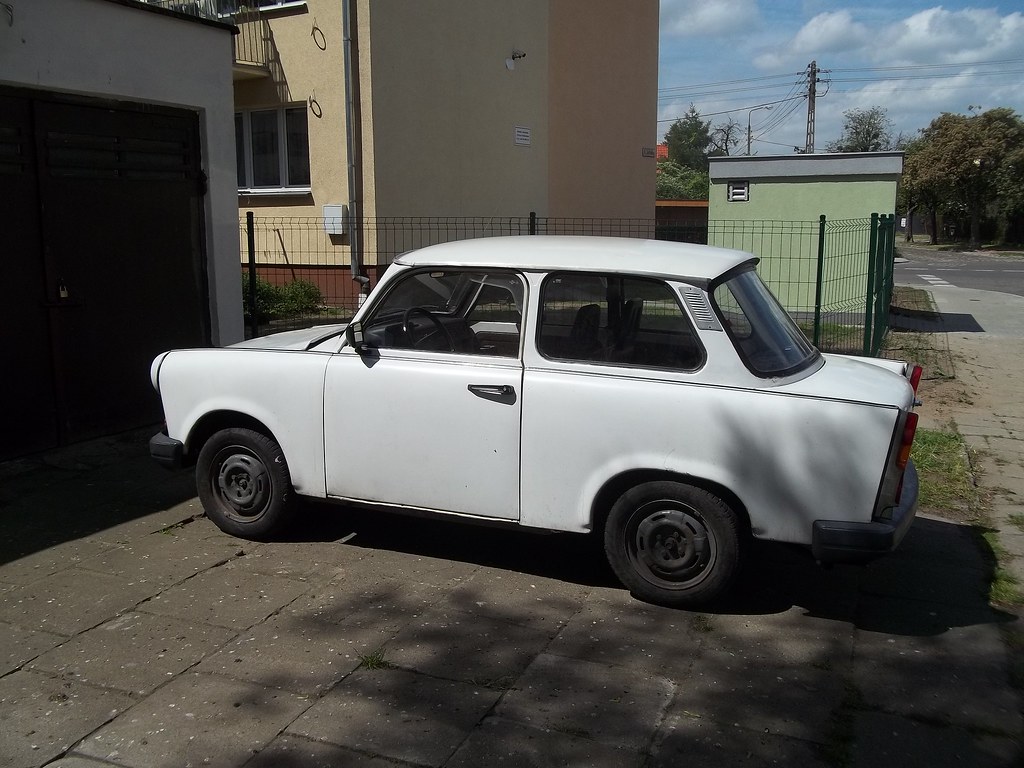
4. Trabant (1957–90)
The Trabant P50, introduced in communist East Germany in 1957, followed by the updated 601 in 1963, wasn’t just a car; it was a potent symbol. Because of its “outdated and inefficient two-stroke engine,” its unique “duroplast body,” and persistent “production shortages,” the Trabant became “regarded with derisive affection as a symbol of the economic downturn of East Germany and of the fall of the Eastern Bloc.” It was a vehicle that encapsulated the struggles and realities of a nation.
Its moment in the international spotlight arrived dramatically with the opening of the Berlin Wall in 1989. “Many East Germans streamed into West Berlin and West Germany in their Trabants” after this historic event and the subsequent German reunification. However, the newfound freedom also spelled the end for the Trabant. It was simply “not competitive anymore against its new, much more sophisticated West German, French, and Japanese competitors” that rapidly flooded the East German and Eastern European markets. An updated Trabant 1.1 with a Volkswagen four-stroke engine was too little, too late, and production ceased shortly after.
Critics wasted no time in dissecting its numerous flaws. Its two-stroke, 18 horsepower engine was “notorious for producing a billowing contrail of smoke,” while its unsynchronized manual transmission “required at least a fifth of Stolichnaya to deal with effectively,” according to author Eric Peters. Automotive journalist Dan Neil famously quipped that the Trabant was the car “that gave communism a bad name” and was “a hollow lie of a car constructed of recycled worthlessness.” He pointed out the poignant fact that after driving to freedom, East Germans “immediately abandoned them.”
Edmunds.com ranked it the 9th worst car of all time, stating it was “one more reason why Communism is evil.” Richard Porter, in his book ‘Crap Cars,’ ranked it 9th worst, lamenting, “Then we saw the Trabant. Oh, the humanity.” Despite being the butt of jokes that quickly spread across Germany, the Trabant has, ironically, gained a strong cult following in reunified Germany. It’s now seen as a recognizable, nostalgic symbol of the bygone world of the GDR, a testament to “Ostalgie,” a German term referring to nostalgia for aspects of life in East Germany.
Read more about: Are You Driving a ‘Jerk’ Car? 14 Vehicles With Bad Driver Reputations
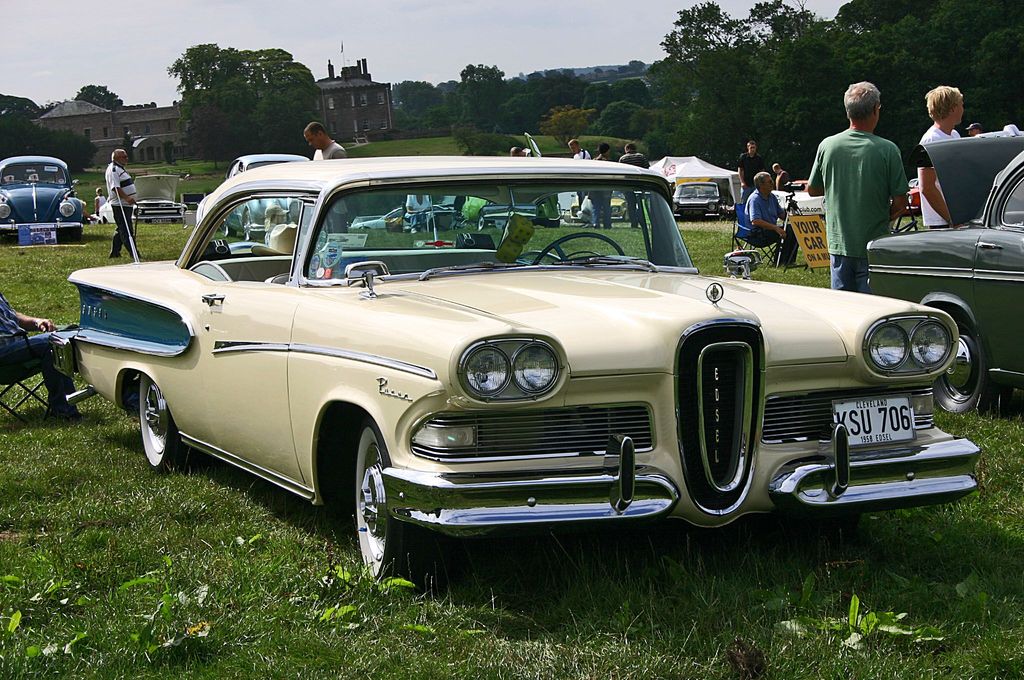
5. Edsel (1958)
The Edsel was launched with a fanfare that could shake the automotive world, the culmination of a staggering “$400 million in investment and marketing by the Ford Motor Company.” This ambitious new brand was strategically positioned between the entry-level Ford and the medium-priced Mercury, designed to go head-to-head with General Motors’ formidable Buick and Oldsmobile brands. Ford’s marketing mavens had painted a picture of a radically different, game-changing car, setting expectations astronomically high.
However, the reality fell far short of the hyper-hype. Despite featuring genuinely new features like “self-adjusting brakes and automatic lubrication,” which would eventually become industry standards, the Edsel largely consisted of “Ford and Mercury components already used in other vehicles.” This made it less ‘revolutionary’ and more ‘redecorated,’ failing to impress a buying public that had been led to expect a futuristic marvel. It simply couldn’t live up to the impossible image its marketing department had created.
The result was a commercial failure of epic proportions, so profound that the name ‘Edsel’ “remains synonymous with ‘commercial failure’ in American popular culture.” It was a big financial flop, generating losses estimated between “$250 million and $350 million” and, tragically, bankrupting many Ford dealers who had invested heavily in the new marque. It remains one of the most expensive blunders in automotive history, a textbook case of how not to launch a product.
The Edsel’s controversial design, particularly its unique ‘horsecollar’ grille, became an immediate target for ridicule. It was frequently mocked for “resembling a toilet seat, and later even the female genitalia.” Famous sarcastic descriptions include it looking like “a Mercury pushing a toilet seat” or “an Oldsmobile sucking a lemon.” Even the tail lamps didn’t escape scorn, criticized as looking like “ingrowing toenails.” These unflattering comparisons only amplified the negative perception surrounding the car.
Contrary to popular belief, the grille’s design was not the sole, or even primary, reason for its failure. The Edsel “mainly suffered from bad marketing and bad build quality,” largely because it shared production lines with Ford and Mercury models instead of having a dedicated assembly line, leading to quality control issues. Its release also coincided with a US recession, and a shift in consumer demand towards smaller economy cars like the Volkswagen Beetle, moving away from medium-priced large cars. As Dan Neil summarized, the Edsel “was not a bad car,” but “the first victim of Madison Avenue hyper-hype,” concluding, “what they got was a Mercury.” Despite its hideousness, author Eric Peters defended it, noting, “you could count on the mechanicals underneath the skin, which were solidly Ford and thus as good as any other car of the era.”
Car Model Information: 1958 Edsel Citation
Name: Edsel
Logo: EdsellogoE.svg
LogoSize: 150
Type: division (business)
Industry: automotive industry
Fate: Dissolved after the “Edsel” model was discontinued
Foundation: [object Object]
Founder: Ford Motor Company
Defunct: [object Object]
Location: Allen Park, Michigan,United States
Products: Automobile
Parent: Ford Motor Company
Categories: 1950s cars, 1958 establishments in Michigan, 1959 disestablishments in the United States, 1960s cars, All articles needing additional references
Summary: Edsel is a discontinued division and brand of automobiles that was produced by the Ford Motor Company in the 1958 to 1960 model years. Deriving its name from Edsel Ford, son of company founder Henry Ford, Edsels were developed in an effort to give Ford a fourth brand to gain additional market share from Chrysler and General Motors. Established as an expansion of the Lincoln–Mercury Division to three brands, re-christened the Mercury–Edsel–Lincoln Division, Edsel shared a price range with Mercury. The division shared its bodies with both Mercury and Ford.
Competing against Buick, Oldsmobile, Pontiac, Dodge, and DeSoto, Edsel was the first new brand introduced by an American automaker since the 1939 launch of Mercury and 1956 launch of Continental, which ended and merged into Lincoln after 1957. In the year leading to its release, Ford invested in an advertising campaign, marketing Edsels as the cars of the future. While 1958 Edsels introduced multiple advanced features for the price segment, the launch of the model line became symbolic of commercial failure. Introduced in a recession that catastrophically affected sales of medium-priced cars, Edsels were considered overhyped, unattractive, distinguished by a vertical grille said to resemble a horse collar, and low quality.
Following a loss of over $250 million (equivalent to $2.66 billion in 2024 dollars) on development, manufacturing, and marketing on the model line, Ford quietly discontinued the Edsel brand before 1960.
Get more information about: Edsel
Buying a high-performing used car >>>
Brand: Edsel Model: Edsel
Price: Not Priced Mileage: 68,904 mi.
Read more about: From Showroom Shame to Collector’s Dream: The Flops That Became Automotive Icons
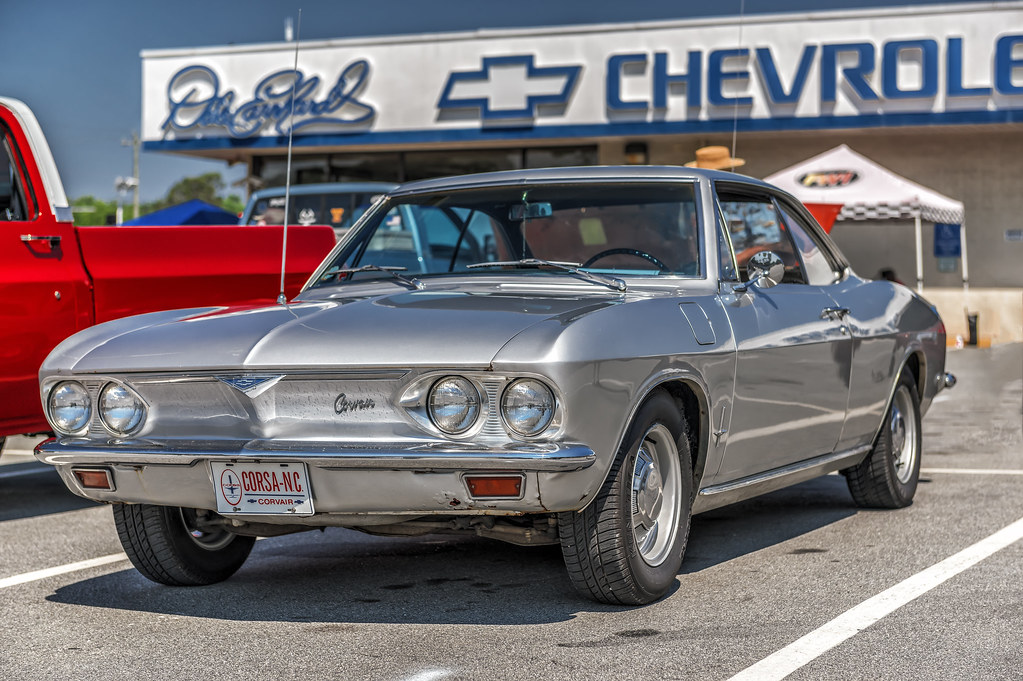
6. Chevrolet Corvair (1960–64)
The Chevrolet Corvair began its life with considerable promise, proving popular and critically praised upon its launch. It represented a bold step for an American automaker, embracing a rear-engine, air-cooled design inspired by European compacts. However, this innovative layout, particularly its swing-axle rear suspension, became its Achilles’ heel. This specific setup “caused a high number of highway accidents among drivers not used to the Corvair’s unusual handling,” leading to a wave of serious safety concerns.
The ensuing legal battles were extensive, with “Over 100 lawsuits filed against General Motors.” This cascade of litigation drew the attention of consumer advocate Ralph Nader, who famously scrutinized the Corvair in his influential 1965 book, ‘Unsafe at Any Speed.’ Nader’s exposé revealed damning information: GM had “declined to include suspension upgrades on the 1960–63 model years that would have given the Corvair safer handling for cost reasons.” This cost-cutting decision, prioritizing budget over safety, solidified the car’s notorious reputation.
GM’s attempts to discredit Nader, rather than addressing the underlying issues, spectacularly backfired, generating even “further negative publicity.” This public relations nightmare unfolded concurrently with the surging popularity of the Ford Mustang, which put significant strain on Corvair sales. The combination of a safety scandal and fierce competition was a potent cocktail for commercial decline, demonstrating how quickly a promising model can fall.
Ironically, despite the early models’ issues, GM did eventually address the suspension. Upgrades were included in the 1964 model year, and the second generation, released in 1965, featured a completely redesigned fully independent suspension. However, the damage was already done. The controversy surrounding the Corvair ultimately led to profound changes in the industry, including “the founding of the National Highway Traffic Safety Administration as well as mandatory safety testing in the United States.” It was a harsh but necessary lesson for the entire automotive sector.
Even former GM executives weighed in on the scandal. John DeLorean, in his 1979 book ‘On a Clear Day You Can See General Motors,’ asserted that “Nader’s criticisms were valid.” Former Ford and Chrysler President Lee Iacocca echoed this, calling the Corvair ‘unsafe’ and a ‘terrible’ car in his autobiography. Dan Neil succinctly stated, “Chevrolet execs knew the Corvair was a handful, but they declined to spend the few dollars per car to make the swing-axle rear suspension more manageable. Ohhh, they came to regret that.” Edmunds.com, summarizing its impact, noted, “Nader had a point.” The Truth About Cars site Curbside Classic even named the Corvair as one of the major “deadly sins” that contributed to GM’s eventual downfall, stating, “The Corvair was the product of GM’s repeated tendencies to go off in directions that were an engineer’s dream, but were either flawed from the initial concept, or diminished by the bean counters. In the case of the Corvair, it was both.”
Car Model Information: 1964 Chevrolet Corvair Monza
Caption: 1964 Chevrolet Corvair Monza
Name: Chevrolet Corvair
Manufacturer: Chevrolet
Production: July 1959
Platform: GM Z platform
Chassis: Unibody
ModelYears: 1960–1969
Assembly: United States,Kansas City, Missouri,Oakland, California,Van Nuys,St. Louis,Flint, Michigan,Belgium,Canada,Mexico,South Africa,Switzerland,Venezuela
Class: Compact car
Successor: Chevrolet Vega
Layout: Rear-engine, rear-wheel-drive layout
Categories: All Wikipedia articles written in American English, All articles lacking in-text citations, All articles needing additional references, All articles with dead external links, All articles with specifically marked weasel-worded phrases
Summary: The Chevrolet Corvair is a rear-engined, air-cooled compact car manufactured and marketed by Chevrolet over two generations from the 1960 through 1969 model years. The Corvair was a response to the increasing popularity of small, fuel-efficient automobiles, particularly the imported Volkswagen Beetle and American-built compacts like the Rambler American and Studebaker Lark.
The first generation (1960–1964) was offered in four-door sedan, two-door coupe, convertible, and four-door station wagon configurations. A two- and four-door hardtop, as well as a convertible, were available as second-generation variants (1965–1969). The Corvair platform was also offered as a subseries known as the Corvair 95 (1961–1965), which consisted of a passenger van, commercial van, and pickup truck variant. Total production was approximately 1.8 million vehicles from 1960 until 1969.
The name “Corvair” was first applied in 1954 to a Corvette-based concept with a hardtop fastback-styled roof, part of the Motorama traveling exhibition. When applied to the production models, the “air” part referenced the engine’s cooling system.
A prominent aspect of the Corvair’s legacy derives from controversy surrounding the handling of early models equipped with rear swing axles, articulated aggressively by Ralph Nader’s Unsafe at Any Speed but tempered by a 1972 Texas A&M University safety commission report for the National Highway Traffic Safety Administration (NHTSA) which found that the 1960–1963 Corvair possessed no greater potential for loss of control in extreme situations than contemporary compacts.
To better counter popular inexpensive subcompact competitors, notably the Beetle and Japanese imports such as the Datsun 510, GM replaced the Corvair with the more conventional Chevrolet Vega in 1970.
Get more information about: Chevrolet Corvair
Buying a high-performing used car >>>
Brand: Chevrolet Model: Corvair
Price: $29,988 Mileage: 74,787 mi.
Read more about: Are You Driving a ‘Jerk’ Car? 14 Vehicles With Bad Driver Reputations

7. Hillman Imp (1963–76)
The Hillman Imp, initially released with considerable optimism and positive media attention, was positioned as a promising contender in the small economy car segment. Its goal was ambitious: to compete primarily with BMC’s hugely popular Mini, a British icon. Upon its launch, the Imp was lauded for its modern design, agile road handling, and several innovative features. These included a motor block made completely of aluminum and an opening rear window that, combined with a folding backseat, offered surprisingly decent luggage space for a car of its size.
Despite these promising attributes, the Imp was ultimately a commercial failure, proving to be a millstone around the neck of its parent company, the Rootes Group. Its poor performance in the market played a significant role in Rootes Group’s financial difficulties, eventually leading to their takeover by Chrysler in 1967, becoming part of Chrysler Europe. While it brought some innovations, it notably adhered to a rear-engine, rear-wheel-drive layout at a time when the Mini had already set the trend for front-engine, front-wheel drive small cars, a decision that proved to be a misstep in a rapidly evolving market.
The primary culprit behind the Imp’s damaged reputation was a critical lack of quality control at its new, purpose-built Linwood plant, coupled with an underdeveloped design that was rushed into production within a mere three years of planning. This hasty development and manufacturing process resulted in a litany of reliability issues that quickly alienated prospective buyers and tarnished its image. It was a classic example of ambition outstripping execution.
The quality issues were widespread and severe. Owners frequently reported the “failure of gearboxes and water pumps,” and problems with “poor engine cooling that often resulted in motors overheating.” Beyond the mechanical woes, there were also general complaints about “poor production quality and panel fit,” indicating a lack of attention to detail throughout the manufacturing process. As a direct consequence, the Imp never achieved the sales figures the Rootes Group had expected, failing even to come close to the Mini’s widespread success.
This string of problems cemented the Imp’s place among Britain’s automotive disappointments. It was named among ‘The Five Worst English Cars of All Time’ in a 2012 article on askaprice.com and ranked the 5th worst British car in a 2008 survey. Hotcars.com placed it at #3 in its list of the 20 worst European cars of all time, and the Oxford Mail included it in its ‘The worst car evah!’ series. Despite this ignominious reputation, the Imp surprisingly remained in production until 1976, eventually replaced by the Chrysler Sunbeam. Its legacy is a stark reminder of how engineering flaws and production shortcuts can derail even the most promising of ventures, leading to the downfall of once-proud automotive marques.
Alright, buckle up, because if you thought the first batch of automotive atrocities was something, we’re just getting warmed up. We’re now diving headfirst into the latter half of history’s most infamous blunders, where quirky imports and domestic disasters took center stage. The 1960s and 1970s brought us some truly baffling decisions, from cars that should have stayed on their home turf to others that sparked landmark changes in consumer safety. Let’s not waste another second and continue our tour through the vehicles that probably shouldn’t have made it past the drawing board.
Read more about: Are You Driving a ‘Jerk’ Car? 14 Vehicles With Bad Driver Reputations
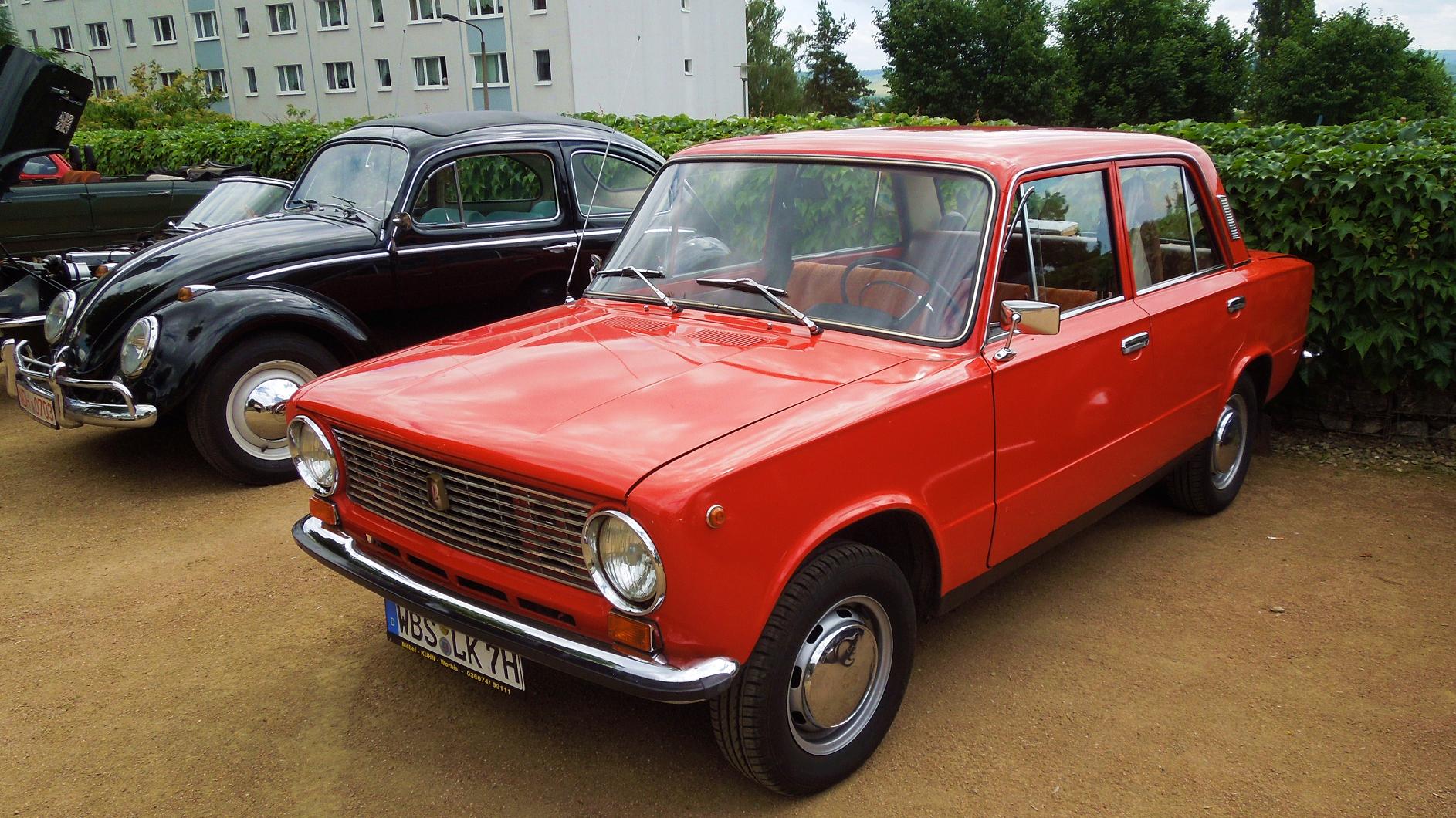
8. Subaru 360 (North American version) (1968–70)
So, the Subaru 360, a tiny titan in its native Japan, actually had a moment of glory over there. But then, an entrepreneur named Malcolm Bricklin thought, “Hey, this is so light, it’s exempt from US automotive safety standards! Let’s bring it over!” And so, in 1968, the first Subaru model landed on American shores, priced at a rather tempting $1,297 and marketed with the utterly unforgettable slogan, “Cheap and ugly does it!” You’ve gotta hand it to them for the honesty, at least.
However, despite this bold (and frankly, hilarious) marketing pitch, the 360 was, to put it mildly, a commercial flop in North America. The esteemed folks at *Car and Driver* didn’t mince words in their period review, declaring it “one of the ugliest cars in history” and charmingly dubbing it “the most bulbous bubble ever to putt-putt.” It seems Americans weren’t quite ready for Japanese kei car charm, or perhaps, its distinct aesthetic.
But the real nail in the coffin came from *Consumer Reports*, which subjected the 360 to its rigorous testing. The results were nothing short of catastrophic. They noted that this little bubble took a glacial 37.5 seconds to crawl from 0 to 60 MPH, a figure that makes a tortoise look like a drag racer. Worse still, it proved “dangerously structurally deficient” in a 30MPH crash test against a standard car, and its bumpers were deemed “virtually useless against anything more formidable than a watermelon.” The publication, in an incredibly rare move, didn’t just criticize it; they outright labeled the 360 “unacceptably hazardous,” a damning indictment if there ever was one.
Their review famously concluded by stating that it “was a pleasure to squirm out of the [car], slam the door and walk away.” Ouch. Unsurprisingly, imports of the 360 ceased in 1970, with many units lingering unsold for years. This led Bricklin to some desperate measures, including a bizarre attempt to launch a series of Go-Kart race tracks using the Subarus as racing cars. Urban legends even persist that unsold 360s were either unceremoniously crushed or pushed into the ocean. Despite this ignominious start, Subaru of America somehow managed to continue operations, eventually finding immense success and selling over 200,000 units a year by 2006. Talk about a comeback story!
Car Model Information: 2021 Subaru Crosstrek Base
Name: Subaru 360
Aka: Subaru 450
Manufacturer: Subaru
Production: 1958–1971
Assembly: Subaru#Manufacturing facilities,Ōta, Gunma
Class: Microcar
BodyStyle: Sedan (car),cabrio coach,station wagon
Engine: List of Subaru engines#Two Cylinder,List of Subaru engines#Two Cylinder,List of Subaru engines#Two Cylinder
Length: 117.7 in
Abbr: on
Disp: flip
Width: 51.2 in
Wheelbase: 70.9 in
Height: 54.3 in
Weight: 900 lb
Successor: Subaru R-2
Doors: Suicide doors
Layout: RR layout
Related: Subaru Sambar
Designer: Shinroku Momose
Categories: 1960s cars, 1970s cars, Articles with short description, Cars discontinued in 1971, Cars introduced in 1958
Summary: The Subaru 360 is a rear-engined, two-door city car manufactured and marketed by Subaru from 1958 to 1971. As the company’s first mass-produced automobile, production reached 392,000 over its 12-year model run.
Noted for its small overall size, 450 kg (1,000 lb) curb weight, monocoque construction, swing axle rear suspension, fiberglass roof panel, and rear-hinged doors, the inexpensive car was designed in response to the Japanese government’s light car or Kei car regulations and its proposal for a larger “national car,” both intended to help motorize the post WWII Japanese population. The 360’s overall size and engine capacity complied with Japan’s Kei car regulations.
Nicknamed the “ladybug” in Japan, and ultimately superseded by R-2, the 360 was one of Japan’s most popular cars and was available in a single generation in two-door, station wagon (“Custom”), “convertible” (a sedan with a roll-back fabric roof) and sporting variants. The two-door sedans’ model code is K111, while the wagon is known as K142. Ten thousand were sold in the United States, imported by Malcolm Bricklin and advertised as “Cheap and Ugly.”
The nameplate 360 derived from its tax-limited engine displacement: 356 cc.
Get more information about: Subaru 360
Buying a high-performing used car >>>
Brand: Subaru Model: 360
Price: $19,000 Mileage: 51,370 mi.
Read more about: Are You Driving a ‘Jerk’ Car? 14 Vehicles With Bad Driver Reputations
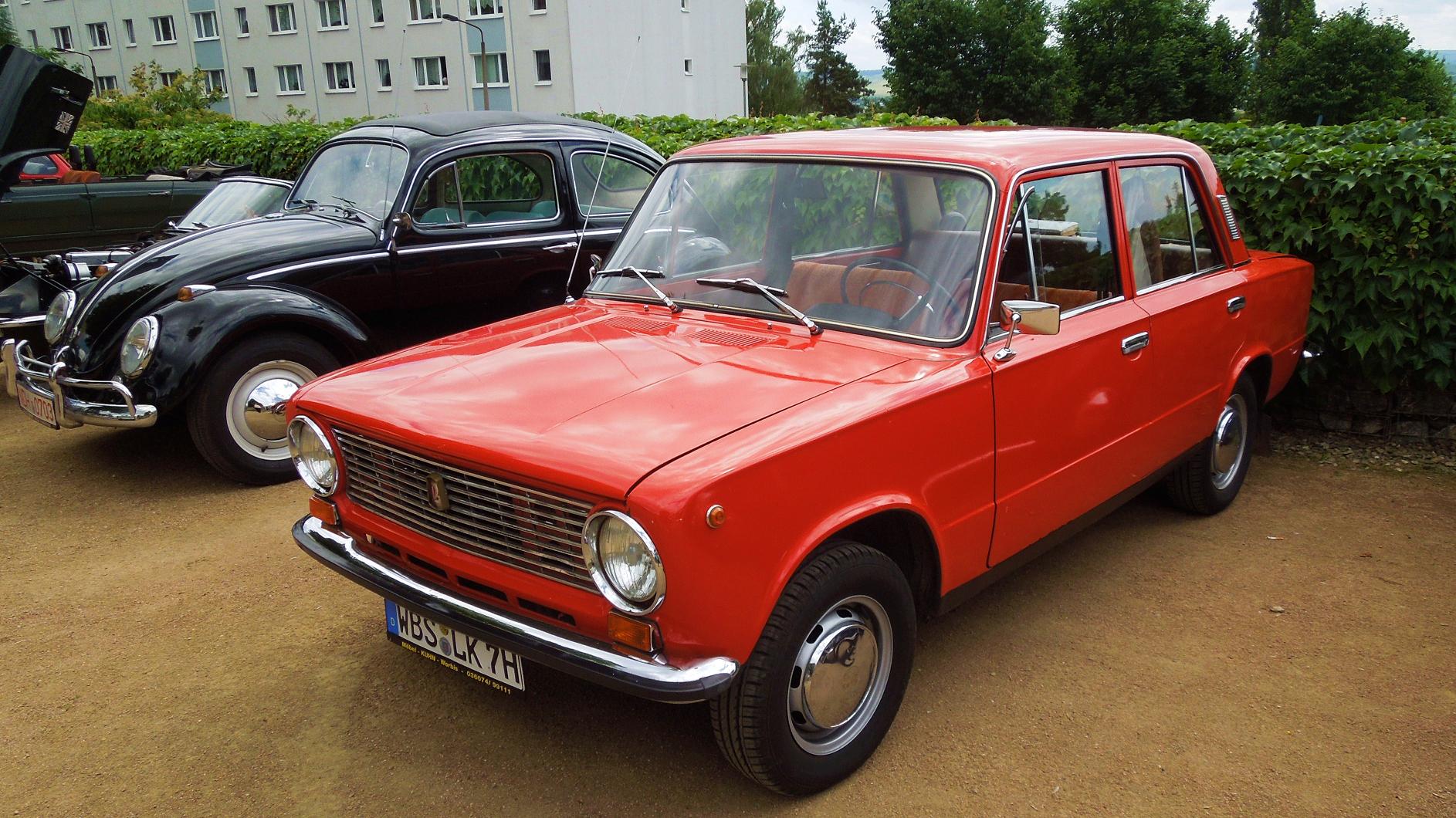
9. VAZ-2101/Lada Riva/Zhiguli (1970–2013)
Ah, the Lada. Or VAZ-2101, or Riva, or Zhiguli – a car with more names than good qualities, depending on where you were in the world. This ruggedized version of the Fiat 124, produced in Russia, entered Western export markets with a thud. Its strongly negative critical reception was hardly surprising, given its outdated technical layout and build quality that often left much to be desired. Motoring provocateur Jeremy Clarkson famously, and rather definitively, called it “simply the worst car in the world.” And when Clarkson speaks, car enthusiasts listen.
Clarkson elaborated on his assessment with typical flair, vividly recounting his experience: “The steering column appeared to have been welded to the dashboard so that it wouldn’t turn. The brakes caused the car to speed up a bit and turn left, violently, at the same time.” He wasn’t done there, noting, “The buttons on the dash appeared to have been put in place by Janet Ellis from Blue Peter, and the engine had plainly been lifted from a cement mixer that had spent the past 30 years chewing up rebel soldiers in southern Sudan.” While it possessed a cockroach-like resilience against nuclear blasts and hammer blows, it apparently couldn’t stand up to water, and its engine was designed for fuel that Clarkson humorously described as “spicy water.”
Richard Porter duly included it in his definitive tome, “Crap Cars,” and both *The Sunday Times* and *The Telegraph* featured it on their lists of the worst production cars, with *The Telegraph* bluntly stating it was “Poor to drive, uncomfortable and basic in the extreme. Virtually any car of the same age will trump this in any category.” Sellyourproblemcar.com piled on, calling it “an all-round disaster” with “poor tank-like handling, negligible engine performance and boxy design” that made it a relic even as it rolled off the line in the 80s.
In its home market during the Soviet era, the Zhiguli was immensely popular, with people actually queuing up to get their hands on one. But its reputation eventually turned, becoming a symbol of the decline of the Russian automobile industry. An updated VAZ-2105, known as the Lada Riva or Nova, was launched in 1980 and, despite its flaws, contributed to the Lada brand selling over 30,000 units a year in the late 1980s. Models like the Samara and the Niva 4×4 also found some success.
However, the combination of dated designs, an archaic technical layout, and the relentless rise of low-cost Asian competitors like Hyundai and Proton led to Lada’s inevitable market share decline from the early 1990s. Struggling to meet EU emissions requirements, Lada eventually withdrew from the UK and most other Western European markets in 1997. Yet, for all its faults, it holds a fascinating place in history as the third-best-selling car of all time (after the Model T and Beetle) and one of the longest-produced. It’s developed a strong cult following, remaining a recognizable cultural icon of Russia and the Soviet Union, and is still a common sight in those regions – a testament to its enduring, if flawed, spirit.
Read more about: Are You Driving a ‘Jerk’ Car? 14 Vehicles With Bad Driver Reputations

10. AMC Gremlin (1970–78)
Ah, the AMC Gremlin. Just the name conjures images of something a bit… mischievous. Introduced in 1970 as a shortened version of the AMC Hornet, it was American Motors’ attempt to tap into the burgeoning subcompact market. However, its truly eccentric styling and decidedly out-of-date technology quickly earned it lasting derision, cementing its place in the pantheon of automotive oddities.
*Time* magazine, ever the arbiter of cultural significance, named it one of the 50 worst cars of all time. Automotive journalist Dan Neil, with his characteristic wit, described how designer Dick Teague’s team “basically whacked off the rear of the AMC Hornet with a cleaver,” resulting in “one of the most curiously proportioned cars ever.” It was cheap, incredibly deprived – featuring vacuum-operated windshield wipers, for crying out loud – and an absolute terror to drive. Its heavy six-cylinder motor and choppy, unhappy handling, courtesy of reduced suspension travel in the back, made for an unenjoyable experience. The unfortunate truth was that while the Gremlin might have been quicker than some other subcompacts, as Neil noted, “that only meant you heard the jeers and laughter that much sooner.”
CNN included it on their “Ten Most Questionable Cars of All Time” list, acknowledging that it could be seen as “either a daring leap forward by an innovative underdog or as a desperate attempt to do something – anything – that would stand out in a marketplace dominated by larger competitors.” *Car Talk* listeners placed it 4th in their “Worst Car of the Millennium” poll, while CNBC included it among their ten ugliest cars. Author Eric Peters eloquently described its signature design feature as a “distinctive ‘What happened to the rest of your car, buddy?’ look.”
Peters further pointed out that the 1970 Gremlin’s glaring absence of disc brakes, radial tires, and electric windshield wipers “hearkened back to the technologically sophisticated days of 1935,” a rather stinging critique for a car launched in the modern era. Edmunds.com didn’t pull any punches either, ranking the Gremlin as the 19th worst car of all time, declaring, “it runs second only to its brother the Pacer in Loserland.” A car so uniquely flawed, it spawned its own category of “Loserland” siblings.
Read more about: Are You Driving a ‘Jerk’ Car? 14 Vehicles With Bad Driver Reputations
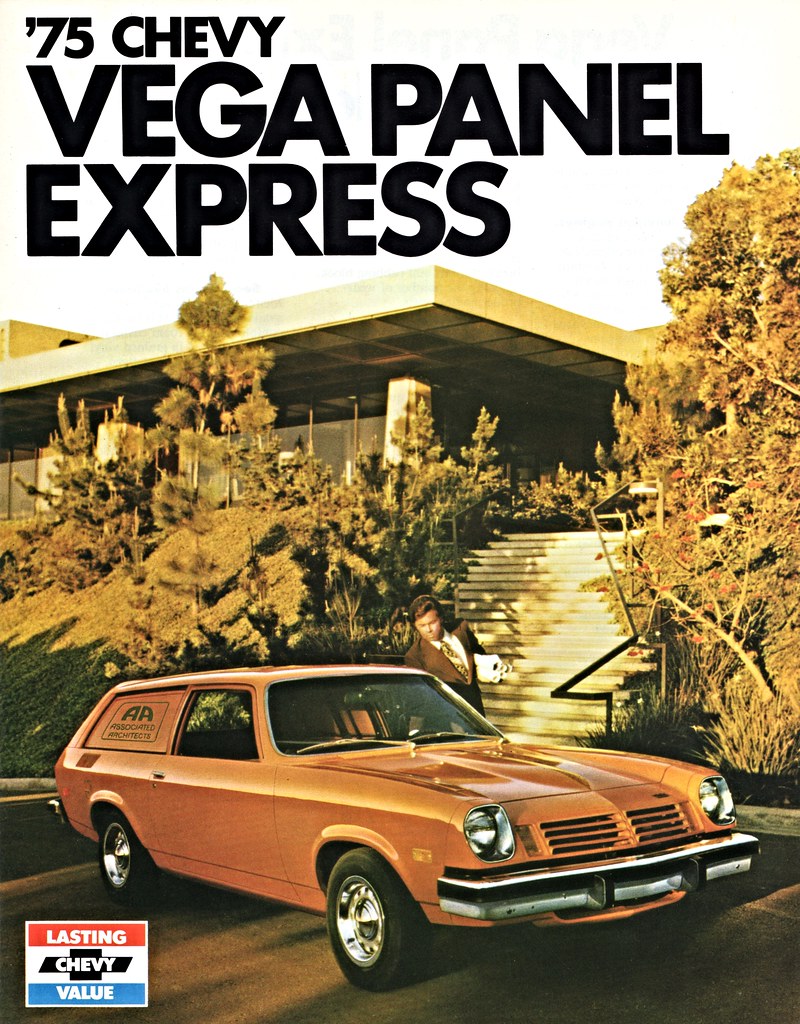
11. Chevrolet Vega (1971–77)
Upon its launch, the Chevrolet Vega was initially showered with accolades, even earning the prestigious Motor Trend Car of the Year award for 1971 and becoming a best-seller. It seemed like GM finally had a winner in the small car segment. However, this promising start quickly unraveled as severe quality and reliability issues began to surface, permanently damaging its once-stellar reputation.
Innovations like its aluminum block engine and a new method of rustproofing, initially praised, proved to be its undoing. The Vega, tragically, was extremely vulnerable to corrosion and prone to premature engine failure. By the late 1970s, the situation was so dire that Vegas were being scrapped at an alarming rate; many junkyards simply refused to purchase them. *Autoblog* placed the Vega on its “The 20 Dumbest Cars of All Time” list, declaring that it “proved the point that American car makers did not make good small cars.”
The car’s infamy grew with its inclusion on *Car Talk’s* poll for “The Worst Car of the Millennium,” where it snatched the unenviable second place. *Forbes* listed it among “The Worst Cars of All Time” in 2004, and *Car and Driver* named it one of the “10 most embarrassing award-winning cars,” vividly stating, “The Chevy Vega is on everyone’s short list for Worst Car of All Time. It seemed the only time anyone saw a Vega on the road not puking out oily smoke was when it was being towed.”
*Popular Mechanics* didn’t just include the Vega on their list of “10 Cars That Damaged GM’s Reputation”; they commemorated the 40th anniversary of its launch by marking it as the very catalyst that set General Motors on a downward spiral, ultimately culminating in its 2009 bankruptcy. This 2010 retrospective highlighted a grim truth: with almost 2 million units built, hundreds of thousands of buyers endured awful experiences, making them “far more willing to consider the Japanese alternatives that were starting to arrive.” *The Truth About Cars* site named the Vega one of the “deadly sins” that led to GM’s downfall, hyperbolically calling it “GM’s Watergate/Waterloo, the beginning of the inevitable end.” Edmunds.com ranked it the 5th worst car of all time, and former GM executive John DeLorean dedicated an entire chapter to its woes in his 1979 book, revealing that GM knew about its quality problems prior to launch. A truly catastrophic failure.
Car Model Information: 1976 Chevrolet Vega
Name: Chevrolet Vega
Caption: 1971 Chevrolet Vega
Aka: Vega 2300
Manufacturer: Chevrolet
Production: 1970–1977
ModelYears: 1971–1977
Assembly: Lordstown, Ohio
Predecessor: Chevrolet Corvair
Successor: Chevrolet Monza
Class: Subcompact car
BodyStyle: notchback,hatchback,station wagon,Panel van
Layout: FR layout
Platform: GM H platform (RWD)
Engine: {{cvt,2.3,L,cuin,0,Chevrolet 2300 engine
Transmission: manual transmission,4-speed manual,overdrive (mechanics),Torque-Drive 2-speed Powerglide requiring manual shifting,Powerglide,Turbo-Hydramatic
Wheelbase: cvt
Length: cvt
Width: cvt
Height: cvt
Weight: cvt
Related: Pontiac Astre,Chevrolet Monza,Pontiac Sunbird#First generation (1976–1980),Buick Skyhawk#First generation (1975–1980),Oldsmobile Starfire#Second generation (1975–1980)
Designer: Bill Mitchell (designer)
Categories: 1970s cars, All articles needing additional references, All articles with unsourced statements, Articles needing additional references from July 2023, Articles with short description
Summary: The Chevrolet Vega is a subcompact automobile manufactured and marketed by GM’s Chevrolet division from 1970 until 1977. Available in two-door hatchback, notchback, wagon, and sedan delivery body styles, all models were powered by an inline four-cylinder engine designed specifically for the Vega, with a lightweight aluminum alloy cylinder block. The Vega first went on sale in Chevrolet dealerships on September 10, 1970. Variants included the Cosworth Vega, a short-lived limited-production performance version introduced spring 1975.
The Vega received the 1971 Motor Trend Car of the Year. Subsequently, the car became widely known for a range of problems related to its engineering, reliability, safety, propensity to rust, and engine durability. Despite numerous recalls and design upgrades, Vega’s problems tarnished its reputation and that of General Motors. Production ended with the 1977 model year.
The car was named for Vega, the brightest star in the constellation Lyra.
Get more information about: Chevrolet Vega
Buying a high-performing used car >>>
Brand: Chevrolet Model: Vega
Price: $30,000 Mileage: 82,344 mi.
Read more about: Are You Driving a ‘Jerk’ Car? 14 Vehicles With Bad Driver Reputations
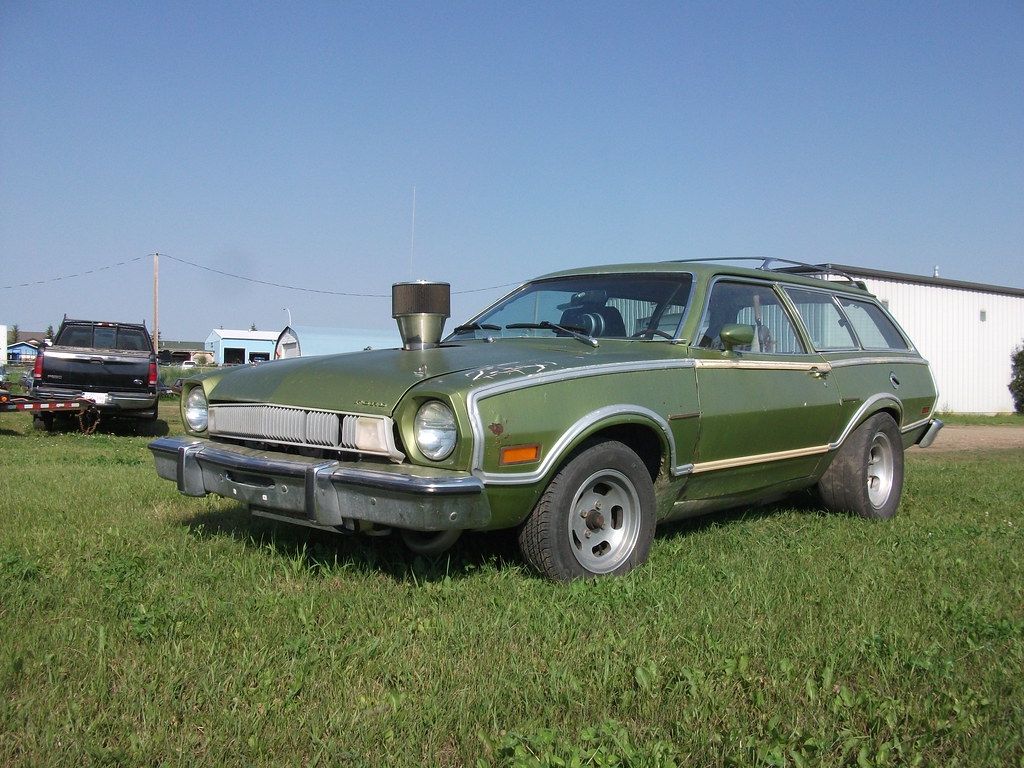
12. Ford Pinto (1971–80)
For all its initial popularity and decent sales figures, the Ford Pinto’s name is now inextricably linked with a far more sinister reputation: that of a car prone to erupting in flames upon being rear-ended due to a dangerously defective fuel tank design. This wasn’t just a rumor; it became a national scandal that scarred Ford’s image for decades.
The infamous “Pinto memo” stands as a chilling piece of evidence in this saga. This document, originally submitted to the NHTSA, examined the societal costs of new roll-over legislation. When it was publicly revealed, it seemed to offer damning proof that Ford executives had knowingly opted against a redesign, having calculated that settling lawsuits would be cheaper than fixing the car. The ensuing public outrage was swift and severe, a firestorm of controversy that burned almost as hot as the unfortunate Pintos themselves.
*Time* magazine included it on their “50 worst cars of all time” list, with Dan Neil wryly commenting, “They shoot horses, don’t they? Well, this is fish in a barrel. Of course the Pinto goes on the Worst list, but not because it was a particularly bad car – not particularly – but because it had a rather volatile nature. The car tended to erupt in flame in rear-end collisions.” CNN further cemented its legendary status among the “Most Questionable Cars of All Time,” noting, “Images of flaming Pintos are so seared into the public consciousness that it’s probably hard for most people, unaided by a photograph, to conjure a mental image of the car while not on fire.”
*Autoblog* ranked the Pinto as the absolute #1 on its list of “The 20 Dumbest Cars of All Time,” a testament to the depth of its infamy. It also claimed third place in *Car Talk’s* 2000 “Worst Car of the Millennium” survey and was ranked the 16th worst car of all time by Edmunds.com. The Ford Pinto remains a potent symbol of corporate negligence and a stark reminder of the devastating consequences when cost-cutting supersedes human safety, leaving an indelible, fiery mark on automotive history.
Car Model Information: 1980 Ford Pinto WAGON
Name: Ford Pinto
Caption: Ford Pinto
Manufacturer: Ford Motor Company
Aka: Mercury Bobcat
Production: September 1970 – July 1980
ModelYears: 1971–1980 (Pinto),1974–1980 (Bobcat)
Assembly: Edison, New Jersey,Milpitas, California
Designer: Robert Eidschun (1968)
Class: Subcompact car
BodyStyle: Sedan (automobile),sedan delivery,station wagon,hatchback
Related: #Mercury Bobcat (1974–1980),Ford Mustang (second generation)
Layout: Front-engine, rear-wheel-drive layout
Chassis: Unibody
Engine: unbulleted list
Abbr: on
Disp: Ford Cologne engine
Transmission: unbulleted list
Wheelbase: 94.0 in
Length: 163 in
Width: 69.4 in
Height: 50 in
Weight: convert
Predecessor: Ford Cortina#Mark II (1966–1970)
Successor: Ford Escort (North America)
Categories: 1980s cars, Articles with short description, Cars discontinued in 1980, Cars introduced in 1970, Commons category link from Wikidata
Summary: The Ford Pinto is a subcompact car that was manufactured and marketed by Ford Motor Company in North America from 1970 until 1980. The Pinto was the first subcompact vehicle produced by Ford in North America.
The Pinto was marketed in three body styles throughout its production: a two-door fastback sedan with a trunk, a three-door hatchback, and a two-door station wagon. Mercury offered rebadged versions of the Pinto as the Mercury Bobcat from 1975 until 1980 (1974–1980 in Canada). Over three million Pintos were produced over its ten-year production run, outproducing the combined totals of its domestic rivals, the Chevrolet Vega and the AMC Gremlin. The Pinto and Mercury Bobcat were produced at Edison Assembly in Edison, New Jersey, St. Thomas Assembly in Southwold, Ontario, and San Jose Assembly in Milpitas, California.
Since the 1970s, the safety reputation of the Pinto has generated controversy. Its fuel-tank design attracted both media and government scrutiny after several deadly fires occurred when the tanks ruptured in rear-end collisions. A subsequent analysis of the overall safety of the Pinto suggested it was comparable to other 1970s subcompact cars. The safety issues surrounding the Pinto and the subsequent response by Ford have been cited widely as business ethics and tort reform case studies.
Get more information about: Ford Pinto
Buying a high-performing used car >>>
Brand: Ford Model: Pinto
Price: $5,951 Mileage: 107,000 mi.
Read more about: Are You Driving a ‘Jerk’ Car? 14 Vehicles With Bad Driver Reputations

13. Morris Marina (1971–80)
The Morris Marina, launched in April 1971 by British Leyland, holds a rather unique, and unenviable, place in British automotive lore. From the moment it hit the streets, it was lambasted for its poor performance, questionable styling, woeful handling, and frankly abysmal build quality. This wasn’t entirely surprising, given its genesis: designed on a shoe-string budget and a blink-and-you’ll-miss-it timescale of less than three years, it was an urgent, desperate attempt to replace a slew of outdated saloon models British Leyland had inherited.
Its cost-cutting extended to its very foundations, reusing mechanical parts like a front suspension that dated back to the 1948 Morris Minor, engines first seen in the early 1950s, and a gearbox and axle from Triumph introduced in 1962. It was meant to be a stop-gap, a mere five-year placeholder. Compounding its woes, it was designed as a direct competitor to the highly successful MkII Ford Cortina, but the very month the Marina was announced, Ford unveiled the larger, more sophisticated MkIII Cortina. Suddenly, the Marina was dated before it even properly arrived. Early cars even had a design flaw in their front suspension that caused dangerous handling, though this was corrected before full-scale sales. Still, critics continued to savage its poor handling, road holding, and overall refinement, with *The Daily Telegraph* firmly placing it on its list of “10 Cars That Should Have Never Been Produced.”
British motoring journalist Jeremy Clarkson has made a career out of lampooning the Marina. On *Clarkson’s Car Years*, he famously compared it to the equally maligned Austin Allegro to determine which was worse, and on one of his DVDs, he gleefully blew up a Marina in an automotive game of bar skittles. He famously quipped that the Marina “cost 40 million pounds to develop, which since it was meant to be hopeless, was too much,” and that its rear suspension “dates back to a medieval hand cart.” Destroying Marinas has become a recurring, much-loved (by some) gag on the BBC series *Top Gear*, a practice that has, predictably, drawn the ire of actual Marina enthusiasts and resulted in complaints to the BBC.
Even *Top Gear* presenter James May, in addressing these complaints, has stated that at least one Marina needs to be preserved in a museum as “a warning from history,” a sentiment that perfectly captures its enduring, if negative, legacy. *CarThrottle* ranked it #1 on its list of “10 Of The Worst Cars Ever Made In The UK.”
Yet, here’s the kicker: despite its universally panned reputation, the Morris Marina was one of Britain’s best-selling cars throughout its production life! It remarkably peaked at second place in the sales charts in 1973 (only behind the mighty Cortina) and consistently held third or fourth place throughout the 1970s. Over 1.2 million Marinas were built in total, making it British Leyland’s second-best-selling car after the Mini. It underwent a facelift in 1980 to become the Morris Ital, a desperate stop-gap replacement until the Austin Montego arrived in 1984. A bizarre paradox of commercial success forged from undeniable automotive failure.
Read more about: Are You Driving a ‘Jerk’ Car? 14 Vehicles With Bad Driver Reputations
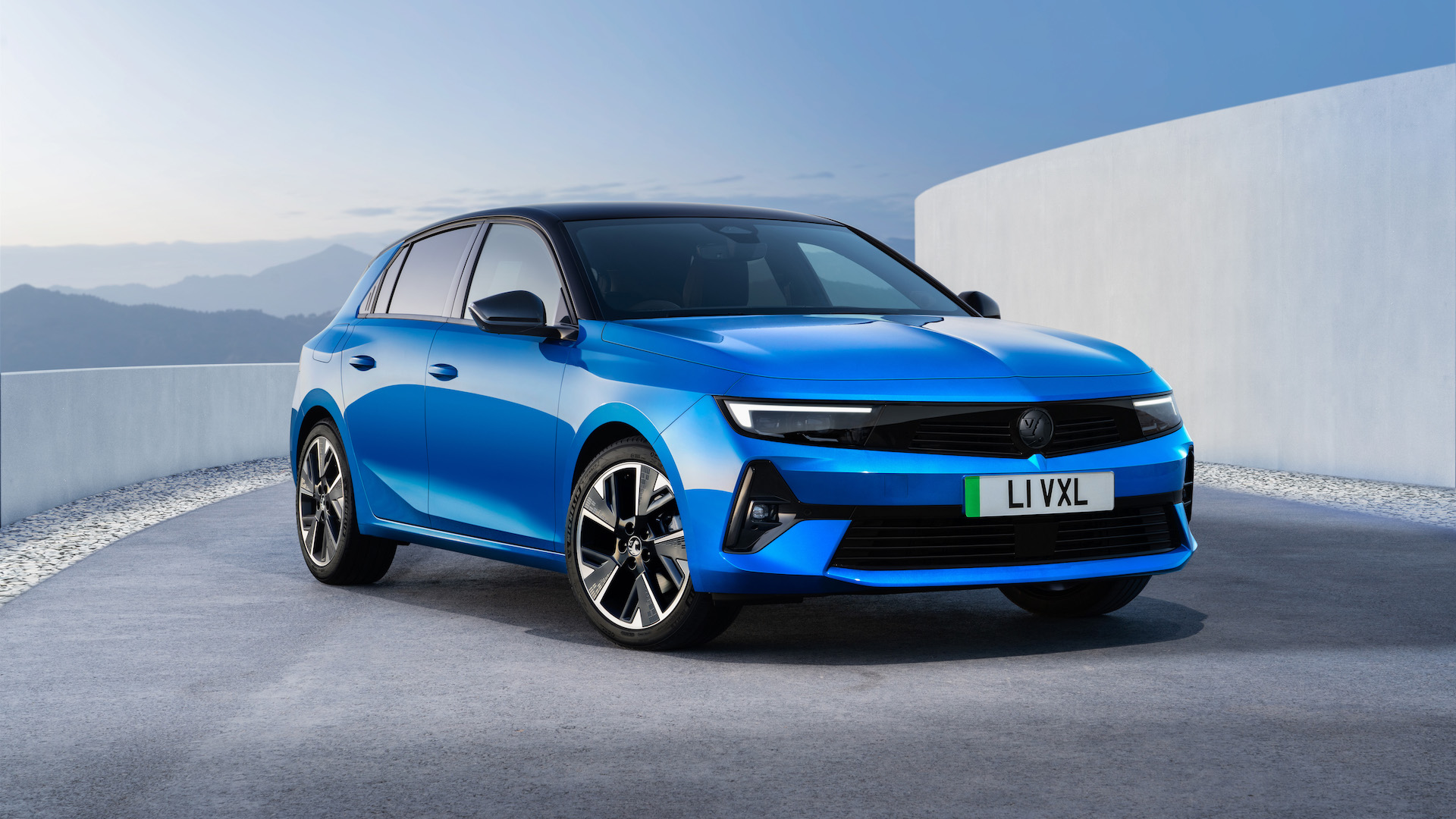
14. Vauxhall HC Viva “Firenza” (Canada) (1971–73)
In the swingin’ sixties, General Motors Canada decided to get into the imported compact game, bringing over Vauxhall models from the UK to duke it out with popular rivals like the Volkswagen Beetle and Toyota Corolla. The Vauxhall HC Viva, when it landed on Canadian shores, was cunningly renamed “Firenza.” This wasn’t some marketing stroke of genius; it was a desperate attempt to distance itself from the previous generation’s notorious quality problems and, rather transparently, to hide its British origins. You know, a fresh start.
Unfortunately for GM Canada, the Firenza was plagued by its own unique cocktail of quality problems, made infinitely worse by a chronic lack of spare parts due to the frequent labor strikes gripping the UK at the time. We’re talking common issues like outright brake failure and, wait for it, engine fires. Yeah, not exactly confidence-inspiring stuff for Canadian motorists.
By 1972, angry Firenza owners had had enough. They banded together to form the “Dissatisfied Firenza Owners Association,” a group dedicated to public demonstrations, loudly broadcasting the car’s litany of problems, and demanding compensation from General Motors for repair costs and the utterly savage depreciation. The car’s reputation became so toxic on the used car market that one-year-old models, even with low mileage, were worth less than a quarter of their original MSRP. Dealerships, naturally, flat-out refused to take them as trade-ins. The absurdity peaked when *two* Firenzas actually caught fire during a 32-car protest outside the Canadian House of Commons. You can’t make this stuff up.
The protests, coupled with horrifying reports of a 19-year-old woman dying in an accident caused by her Firenza’s steering failing, finally prompted intervention from the Canadian government. General Motors, in classic fashion, denied the problems and tried to salvage the Firenza’s reputation with some rather deceptive marketing. Unsurprisingly, this was too little, too late, and the car was withdrawn from the Canadian market in early 1973.
The saga continued when the Disaffected Firenza Owners Association attempted to sue General Motors. Canada, at the time, lacked laws establishing class-action lawsuits, a void that none other than Prime Minister Pierre Trudeau himself oversaw the creation of, directly influenced by the Firenza fiasco. This monumental failure significantly hurt Vauxhall, which considered Canada a crucial export market. *Curbside Classic* even goes so far as to argue that the Firenza debacle, alongside the HC Viva’s poor reception elsewhere, is directly responsible for Vauxhall no longer being an autonomous company, forcing it to sell a lineup of slightly modified Opels. In a 2018 retrospective, *Autofocus.ca* starkly called the Firenza “the worst car Canada ever saw,” suggesting that its obscurity outside of Canada is the only thing preventing it from being widely considered one of the all-time worst cars, a true Canadian equivalent of Ralph Nader and the Chevrolet Corvair scandal.
Car Model Information: 2023 Mazda Mazda3 FWD w/Select Package
Name: Vauxhall Viva
Caption: Vauxhall Viva HC Series
Manufacturer: Vauxhall Motors
Production: unbulleted list
Successor: unbulleted list
Class: Small family car
Categories: 1970s cars, All Wikipedia articles written in British English, All articles with unsourced statements, Articles with short description, Articles with unsourced statements from April 2024
Summary: The Vauxhall Viva is a small family car that was produced by Vauxhall in a succession of three versions between 1963 and 1979. These were designated the HA, HB and HC series.
The Viva was introduced a year after Vauxhall’s fellow General Motors company Opel launched the Opel Kadett A. Both cars were a result of the same General Motors project and share the same floorpan and engine constructions, but with one main difference being the use of metric measurements for the Opel and imperial ones for the Vauxhall. They are also visually similar, however few components are interchangeable. A van version was also produced, as the Bedford HA. In the UK the Viva’s principal competitors at the time of its launch included the well-established Ford Anglia and Morris Minor.
The third generation HC series was the last solely Vauxhall designed passenger car when it ceased production in 1979 (although not the last Vauxhall designed vehicle to go out of production overall – that distinction belongs to the Bedford CF van), as General Motors Europe unified the Opel and Vauxhall brands around a single range of Opel-developed models.
Vauxhall revived the Viva nameplate from 2015–2019 on a rebadged variant of the fourth generation Opel Karl/Chevrolet Spark.
Get more information about: Vauxhall Viva
Buying a high-performing used car >>>
Brand: Vauxhall Model: HC Viva
Price: $17,197 Mileage: 57,859 mi.
Read more about: Are You Driving a ‘Jerk’ Car? 14 Vehicles With Bad Driver Reputations

15. Lancia Beta (1972–84)
The Lancia Beta, upon its debut in 1972, was initially greeted with widespread praise from both the motoring press and the general public. It promised a sophisticated driving experience with Italian flair. However, this promising start quickly dissolved as the Beta rapidly gained a notorious reputation for being spectacularly rust-prone, particularly the early models. It wasn’t just a little surface rust; we’re talking about serious, structural corrosion.
At the time, wild rumors circulated that this alarming vulnerability to rust was due to the vehicles being constructed with Soviet steel, allegedly supplied to Lancia’s parent company, Fiat, as part of a convoluted exchange for building the main Lada factory in Russia. It was a juicy, Cold War-era conspiracy theory that made for great headlines.
While these claims of tainted Soviet steel were never officially verified, subsequent investigations and automotive historians have suggested that the issues were far more likely the result of alarmingly poor rustproofing techniques by Lancia itself, combined with the prolonged factory strikes that unfortunately plagued Italy during that period. Regardless of the actual culprit, these severe corrosion problems became such a widespread and undeniable issue that large numbers of Betas had to be recalled, a deeply embarrassing moment for a brand with Lancia’s prestigious heritage.
The negative publicity generated by the Beta’s rust issues, coupled with the simultaneous failure of the larger Gamma model, permanently damaged Lancia’s once-sterling reputation. This led to a precipitous decline in sales, particularly in the United Kingdom, which was, at the time, its largest export market. The brand’s sales never truly recovered, a downturn that ultimately led to Lancia’s withdrawal from all right-hand drive markets in 1994, marking the end of an era for a once-innovative Italian automaker. The Beta stands as a stark reminder that even the most lauded designs can be brought down by fundamental quality control failures.
And there you have it, folks – a deep, unvarnished dive into the automotive graveyard, a place where dreams of innovation often crashed and burned on the harsh realities of design flaws, engineering oversights, and sometimes, just plain bad ideas. From the laughably underpowered to the dangerously unsound, these 15 vehicles serve as critical cautionary tales for the industry, stark reminders that even the most brilliant minds can occasionally create a car that absolutely, unequivocally, shouldn’t have been made. While some have found ironic cult followings, their initial impact was largely one of disappointment, frustration, and in some cases, outright danger. So next time you’re cursing your perfectly reliable daily driver, spare a thought for these legends of vehicular ineptitude, and perhaps, offer a silent prayer of thanks for how far automotive engineering has come. Drive safe, and for Pete’s sake, double-check that your bumpers aren’t just for watermelons. Seriously.

